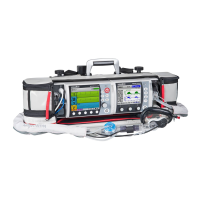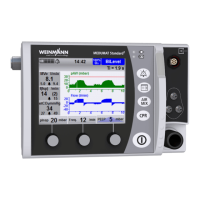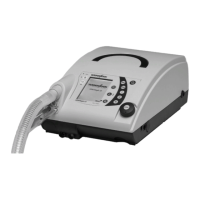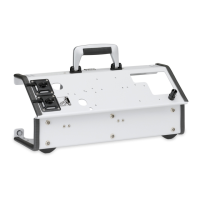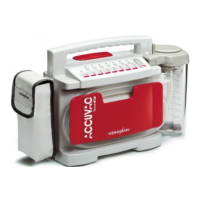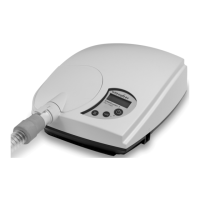WM 68401 04/2021
MEDUCORE Standard
2
EN 157
6 Operation
6.9 Pulse oximetry monitoring
6.9.1 Preparing pulse oximetry monitoring
Requirement • The device is switched on (see “6.1 Switching on the device”,
page 118).
• A patient group is selected (see “6.4 Selecting patient group”,
page 120).
Risk of injury due to incorrect use of the pulse oximetry
sensor!
Incorrect use of the pulse oximetry sensor may falsify
measurement results and lead to patient injury.
Keep the pulse oximetry sensor away from strong
electromagnetic sources (e.g. electrosurgical devices).
Do not use the pulse oximetry sensor in areas subject to X-ray
(e.g. with MRI devices).
Keep the pulse oximetry sensor away from strong and
fluctuating ambient light (including infrared and UV light). If
necessary: Cover the pulse oximetry sensor.
Avoid strong movement of the pulse oximetry sensor. If
necessary: To relieve strain, loop the pulse oximetry sensor
cable and the pulse oximetry sensor connecting cable and fix to
the patient with a plaster.
Do not attach the pulse oximetry sensor to a limb on which
there is already an NIBP cuff or catheter port.
Keep the pulse oximetry sensor away from nail polish and
artificial fingernails.
Keep the pulse oximetry sensor away from intravascular dyes.
Be aware of deviations from the measurement result with a
high proportion of dysfunctional hemoglobins.
Be aware of deviations from the measurement result in the case
of severe anemia, venous pulsation and high total bilirubin
values.
Be aware of deviations in pulse rate with an intra-aortic balloon
pump or certain arrhythmias.
If necessary: Compare the pulse rate with the heart rate
determined by ECG monitoring.
Be aware of deviations from the measurement result during
defibrillation/cardioversion.

